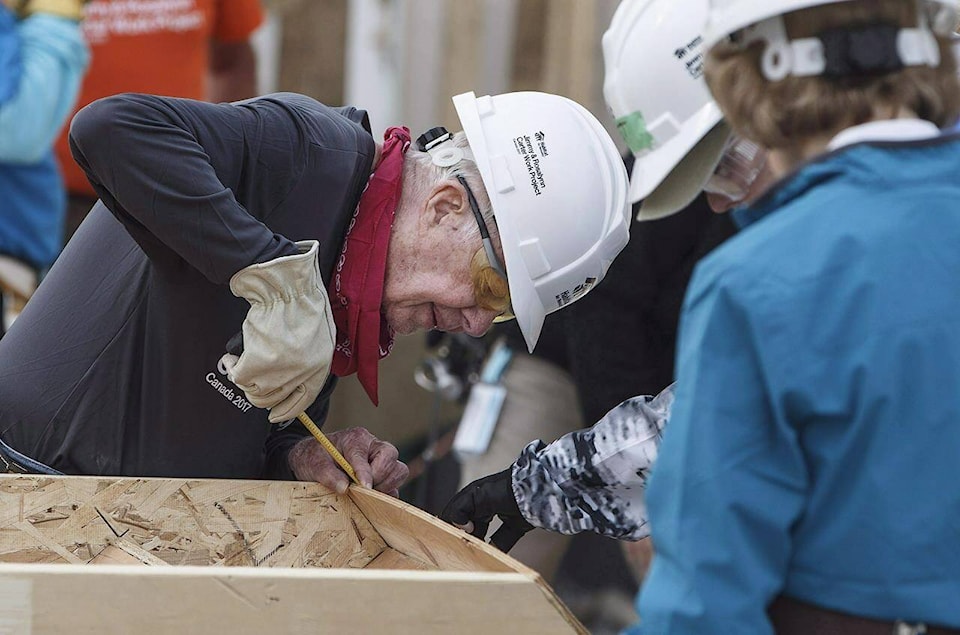Suzanne Taylor, a volunteer with Habitat for Humanity, remembers former U.S. president Jimmy Carter being “strict” on construction sites, refusing to pose for pictures with others while on the job.
“If I stopped to take a picture with you, that’s two of us not working,” she recalled him saying.
The Carter Center announced Saturday that the 98-year-old former president has decided to spend his remaining time at home with his family, receiving hospice care after a series of hospital stays.
Many who worked alongside him in Alberta building affordable homes for families have since shared memories and well-wishes on social media.
He would work late at the site without complaining about the extreme temperatures and never needed any instructions, said Taylor, who is a retired lawyer and has been a Habitat volunteer since 2006.
“If you’re not moving and working, he’d yell at you.”
Taylor volunteered at a southeastern Edmonton site in 2017, building affordable homes for lower-income families as a part of the Carter Work Project.
The former president had pledged to build 150 affordable homes with Habitat for Humanity across Canada as the country marked 150 years since Confederation.
The site with 58 townhouses in the provincial capital is now known as Carter Place, named after the longest-living former president and his wife, Rosalynn Carter.
Taylor and fellow volunteer Max Vandersteen recall Carter being “very hands-on” at construction sites, even into his 90s.
Vandersteen, who was volunteering in Fort Saskatchewan remembers Carter as inspirational during a surprise visit to the site 30 kilometres northeast of Edmonton.
“See(ing) him still swinging a hammer… he still had the desire and drive to be a part of the force working on building houses,” he said.
Carter also interacted with families and people volunteering at the site when he wasn’t working.
His legacy has left a huge mark on the families, said Kyle Keller, senior communications manager at Habitat for Humanity Edmonton.
“He highlighted the importance of affordable housing (and) home ownership, and how that can transform a family’s life,” Keller said.
His work moved families from living paycheque-to-paycheque to becoming independent and stable, he added.
For Badri Yonis, a home at Carter Place has meant stability. Owning his first place ended the struggles of finding rentals for a seven-member family.
“Now, we have something we call our home.”
Yonis was volunteering with Habitat for Humanity when the Carters were in Edmonton. He recalled the former president asking new homeowners to continue serving the community.
“I’m still doing that with Habitat for Humanity,” he said.
Six years ago, Rachelle Usman was approved to buy affordable housing. She said it was like a wish come true for her and her 10-year-old son.
A resident of Carter Place, she said her first home became more special with Carter visiting and helping with the construction.
While many residents still call Carter Place their home, Keller said many have moved into the open market, selling back their properties to Habitat for Humanity and purchasing another home or investing in life goals.
